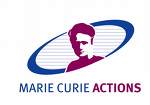| PAST LECTURES | |
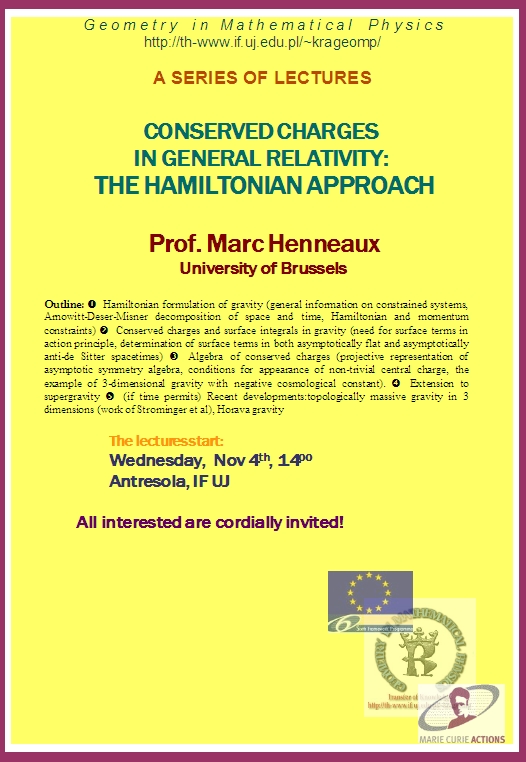 | Marc Henneaux, University of Brussels CONSERVED CHARGES IN GENERAL RELATIVITY: THE HAMILTONIAN APPROACH Hamiltonian formulation of gravity (general information on constrained systems, Arnowitt-Deser-Misner decomposition of space and time, Hamiltonian and momentum constraints) * Conserved charges and surface integrals in gravity (need for surface terms in action principle, determination of surface terms in both asymptotically flat and asymptotically anti-de Sitter spacetimes) * Algebra of conserved charges (projective representation of asymptotic symmetry algebra, conditions for appearance of non-trivial central charge, the example of 3-dimensional gravity with negative cosmological constant). * Extension to supergravity * (if time permits) Recent developments:topologically massive gravity in 3 dimensions (work of Strominger et al), Horava gravity. |
 | Yasha Shnir SELECTED TOPICS IN QUANTUM FIELD THEORY AND THEORY OF SOLITONS
|
 | Marc Henneaux, University of Brussels ALGEBRAIC METHODS IN LOCAL FIELD THEORY THE BRST APPROACH The BRST symmetry plays a central role in our understanding of theories with a local gauge freedom (Yang-Mills gauge theories, general relativity). The roots of the BRST symmetry involve rich algebraic and geometrical concepts, ranging from homological algebra to (Hamiltonian) reduction. The BRST construction will be explained in the lectures with a pedagogical emphasis. The power of the BRST symmetry will be illustrated in various physical situations taken both from the classical and quantum contexts conservation laws, consistent deformations of a gauge invariant action, renormalization, anomalies. The first lecture will be colloquium-style and adressed to a broad audience (1 hour). The subsequent lectures will develop the theory in more details without, however, assuming previous knowledge of the subject. |
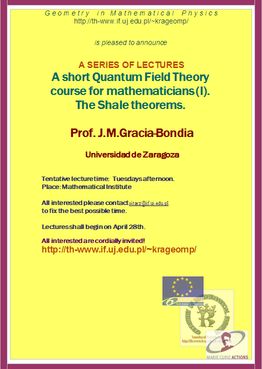 | Jose M. Gracia-Bondia, Universidad de Zaragoza A SHORT QUANTUM FIELD THEORY COURSE FOR MATHEMATICIANS - THE SHALE THEOREMS. |
 | Julian Keller, University of Provence, Marseille CALABI-YAU THEOREM AND ITS APPLICATIONS. |
 | Piotr Chruściel, University of Oxford INTRODUCTION TO BLACK HOLES The aim of the lectures is an introduction to mathematical theory of black holes. The following topics will be discussed: spherically symmetric black holes, conformal diagrams, Kerr black hole, black rings, geometry of horizons, area theorem, basic causality properties, uniqueness theorems for black hole solutions. |
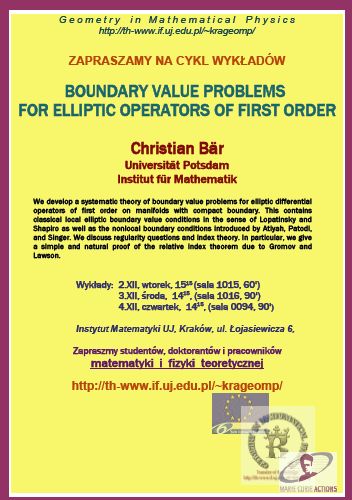 | Christian Bär, Universität Potsdam, Institut für Mathematik BOUNDARY VALUE PROBLEMS FOR ELLIPTIC OPERATORS OF FIRST ORDER We develop a systematic theory of boundary value problems for elliptic differential operators of first order on manifolds with compact boundary. This contains classical local elliptic boundary value conditions in the sense of Lopatinsky and Shapiro as well as the nonlocal boundary conditions introduced by Atiyah, Patodi, and Singer. We discuss regularity questions and index theory. In particular, we give a simple and natural proof of the relative index theorem due to Gromov and Lawson. |
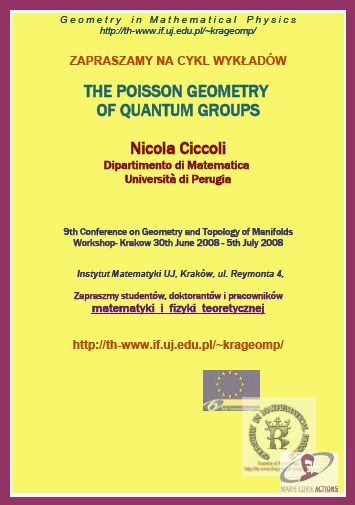 | Nicola Ciccoli, Dipartimento di Matematica, Universita di Perugia THE POISSON GEOMETRY OF QUANTUM GROUPS |
 | Nicola Teleman, Universita degli Studi di Ancona INTRODUCTION TO THE INDEX THEOREM |
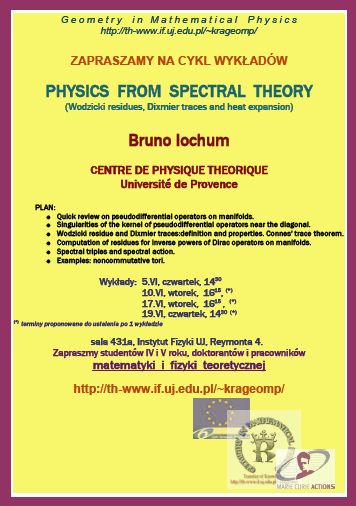 | BRUNO IOCHUM, Centre de Physique Theorique, Université Aix Marseille PHYSICS FROM SPECTRAL THEORY Quick review on pseudodifferential operators on manifolds. Singularities of the kernel of pseudodifferential operators near the diagonal. Wodzicki residue, Dixmier traces: Definition and properties and Connes' trace theorem. Computation of residues for inverse powers of Dirac operators on manifolds. Spectral triples and Spectral action. Examples - Noncommutative torus. |
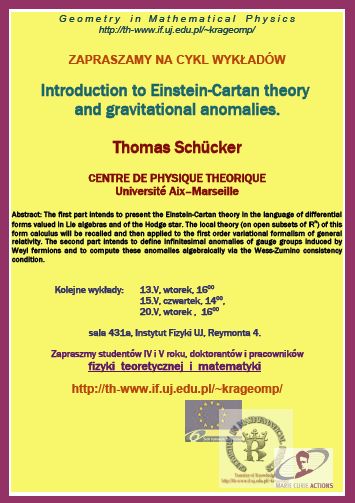 | THOMAS SCHUECKER, Centre de Physique Theorique, Université Aix Marseille Introduction to Einstein-Cartan theory and gravitational anomalies. The first part intends to present the Einstein-Cartan theory in the language of differential forms valued in Lie algebras and of the Hodge star. The local theory (on open subsets of R^n) of this form calculus will be recalled and then applied to the first order variational formalism of general relativity. The second part intends to define infinitesimal anomalies of gauge groups induced by Weyl fermions and to compute these anomalies algebraically via the Wess-Zumino consistency condition |
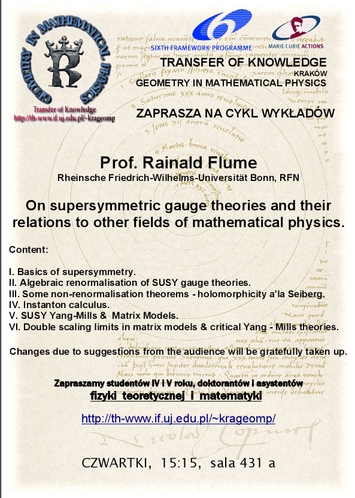 | RAINALD FLUME, Rheinsche Friedrich-Wilhelms-Universitaet Bonn On supersymmetric gauge theories and their relations to other fields of mathematical physics. I. Basics of supersymmetry. II. Algebraic renormalisation of SUSY gauge theories. III. Some non-renormalisation theorems - holomorphicity a la Seiberg. IV. Instanton calculus. V. SUSY Yang-Mills Matrix Models. VI. Double scaling limits in matrix models critical Yang - Mills theories. |
 | NIALL O MURCHADHA, Physics Department, University College, Cork, Ireland. General Relativity as a Dynamical System I begin with the ADM/Dirac analysis of the Einstein equations, showing how to transform them into a dynamical system. This naturally involves the split between the constraint equations and the dynamical equations. I will discuss the compact, without boundary, case but my main focus will be on the asymptotically flat case. I then show how the ADM energy-momentum-angular momentum naturally emerges. (ca. 4 lectures) I will discuss the various conformal methods of solving the constraints as an introduction to the Schoen-Yau proof of the positivity of the ADM energy. I will give a simple version of the first Schoen-Yau proof (the riemannian case). I will also outline Schoens completion of the Yamabe proff, based on the positive energy proof. (ca. 5 lectures) I will then discuss the Hamiltonian based quasi-local energies of Brown-York and Kijowski-Liu-Yau. (ca. 3 lectures). Finally, I will discuss the evolution equations. In particular, I will focus on the amazing recent success of the moving puncture method in solving the binary black hole problem. |

